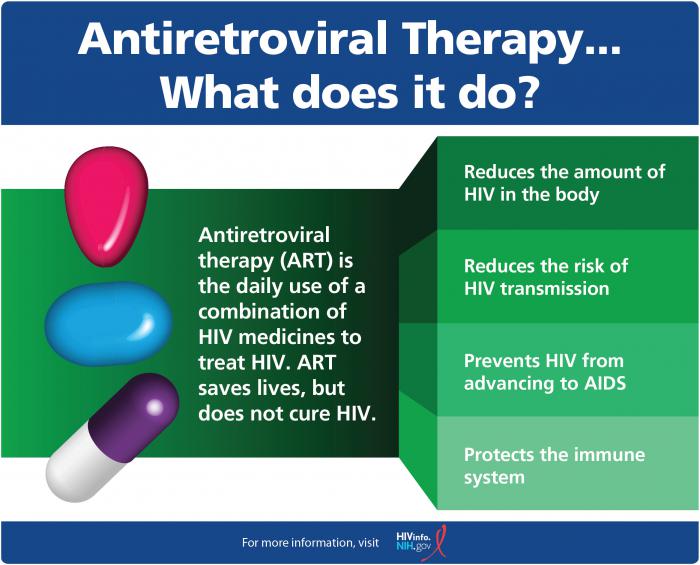Antiretroviral Therapy (ART)

Antiretroviral Therapy (ART): Overview, Mechanisms, and Clinical Applications
Antiretroviral therapy (ART) is the cornerstone of HIV treatment, involving a combination of drugs designed to suppress viral replication, improve immune function, and prevent disease progression. Below is a detailed synthesis of its mechanisms, benefits, challenges, and clinical considerations.
Mechanisms of Action
ART targets multiple stages of the HIV life cycle to inhibit viral replication:
- Entry Inhibitors: Block HIV from entering CD4 cells by interfering with receptors like CCR5 or CXCR4.
- Reverse Transcriptase Inhibitors:
- Nucleoside Reverse Transcriptase Inhibitors (NRTIs): Mimic host nucleotides to terminate DNA chain elongation.
- Non-Nucleoside Reverse Transcriptase Inhibitors (NNRTIs): Bind to reverse transcriptase enzyme, preventing DNA polymerization.
- Integrase Strand Transfer Inhibitors (INSTIs): Prevent integration of viral DNA into the host genome.
- Protease Inhibitors (PIs): Block protease enzymes needed for viral maturation.
- Capsid Inhibitors: Disrupt capsid formation, impairing viral replication.
Combination therapy uses drugs from different classes to maximize efficacy and reduce drug resistance[2][4].
Benefits of ART
Viral Suppression:
- Reduces HIV RNA levels to undetectable levels (<50 copies/mL), preventing immune system damage[1][2].
- Achieving “undetectable = untransmittable” (U=U), meaning there is no risk of transmitting HIV when viral load is suppressed[7].
Improved Immune Function:
- Promotes CD4 cell recovery and reduces opportunistic infections[1][3].
Prevention of HIV Transmission:
- Lowers the risk of sexual and perinatal transmission[5].
Long-Term Health Benefits:
- Reduces morbidity and mortality associated with HIV-related complications like cardiovascular disease, renal dysfunction, and cancers[3][5].
Challenges
Adherence Issues:
- Missing doses can lead to drug-resistant strains of HIV, reducing treatment efficacy[2][6].
Side Effects:
- Short-term effects include nausea and fatigue; long-term effects may involve metabolic complications like high cholesterol or weight gain[7].
Drug Resistance:
- Transmitted or acquired resistance can limit treatment options[6].
Access Inequities:
- Regional disparities in ART availability affect outcomes globally[7].
Clinical Considerations
Initiation Guidelines:
- ART is recommended for all individuals diagnosed with HIV, regardless of CD4 count, to reduce morbidity and transmission risks[5].
- Rapid initiation on the day of diagnosis improves engagement and accelerates viral suppression[5].
Monitoring:
- Regular testing for viral load and CD4 counts ensures treatment efficacy and identifies potential toxicity[4][5].
Personalized Regimens:
- Selection depends on patient-specific factors such as comorbidities, drug interactions, and preferences[4].
Future Directions
Long-Acting Therapies:
- Injectable antiretrovirals offer alternatives to daily regimens for improved adherence.
Dual-Drug Regimens:
- Emerging evidence supports simplified regimens for select patients without compromising efficacy[1].
Integrative Care Models:
- Person-centered approaches aim to optimize adherence and quality of life while reducing health system burdens[3].
Conclusion
ART has transformed HIV from a fatal disease into a manageable chronic condition, enabling individuals to live longer, healthier lives while preventing transmission. With ongoing advancements in drug development and care delivery models, ART continues to improve outcomes for people living with HIV.
Consult with Our Team of Experts Now!
At DrStemCellsThailand (DRSCT)‘s Anti-Aging and Regenerative Medicine Center of Thailand, we emphasize comprehensive evaluations and personalized treatment plans of Cellular Therapy and Stem Cells for managing various health conditions. If you have questions about Antiretroviral Therapy (ART) or would like more information on our services, consult with our experts today!
Consult with Our Team of Experts Now!
References
- Title: Advances in Antiretroviral Therapy: Long-Acting Injectable Options for HIV Management
DOI: 10.1016/j.jinf.2023.01.004
Summary: Explores the development of long-acting injectable antiretroviral therapies, highlighting their potential to improve adherence and reduce the burden of daily oral regimens. - Title: Integrase Strand Transfer Inhibitors in Antiretroviral Therapy: Mechanisms and Clinical Applications
DOI: 10.1093/cid/ciab123
Summary: Reviews the role of integrase strand transfer inhibitors (INSTIs) in ART, focusing on their efficacy, safety profiles, and impact on viral suppression. - Title: The Role of Antiretroviral Therapy in Achieving Undetectable Viral Loads and Preventing HIV Transmission
DOI: 10.3389/fimmu.2024.1008321
Summary: Discusses the concept of “undetectable equals untransmittable” (U=U) and the importance of ART in reducing viral loads and preventing sexual transmission of HIV.















